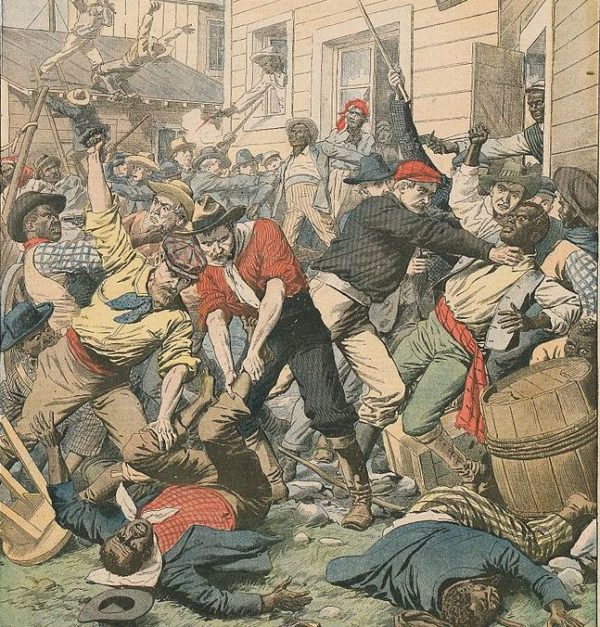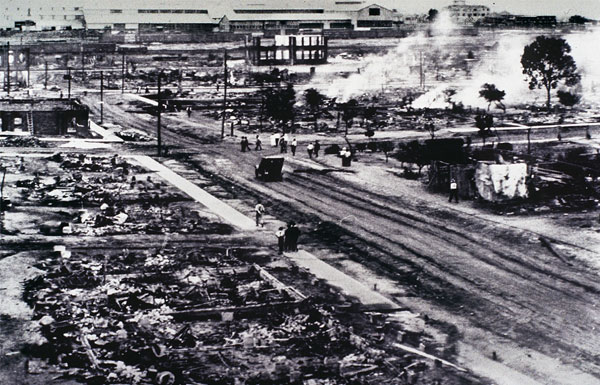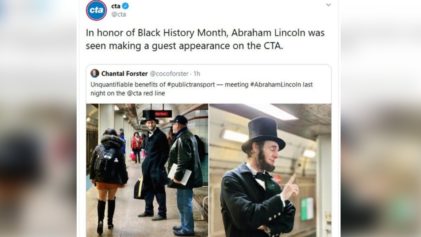Atlanta Race Riot (1906)
When the Civil War ended, African-Americans in Atlanta began entering the realm of politics, establishing businesses and gaining notoriety as a social class. Increasing tensions between Black wage-workers and the white elite began to grow and ill-feelings were further exacerbated when Blacks gained more civil rights, including the right to vote.
The tensions exploded during the gubernatorial election of 1906 in which M. Hoke Smith and Clark Howell competed for the Democratic nomination. Both candidates were looking for ways to disenfranchise African-American voters because they each felt that the Black vote could throw the election to the other candidate.
Hoke Smith was a former publisher of the Atlanta Journal and Clark Howell was the editor of the Atlanta Constitution. Both candidates used their influence to incite white voters and help spread the fear that whites may not be able to maintain the current social order.
The Atlanta Georgian and the Atlanta News began publishing stories about white women being molested and raped by Black men. These allegations were reported multiple times and were largely false.
On Sept. 22, 1906, Atlanta newspapers reported four alleged assaults on local white women. Soon, some 10,000 white men and boys began gathering, beating, and stabbing Blacks. It is estimated that there were between 25 and 40 African-American deaths; it was confirmed that there were only two white deaths.
Greenwood, Tulsa, Oklahoma “Black Wall Street” (May 31 – June 1, 1921)
During the oil boom of the 1910s, the area of northeast Oklahoma around Tulsa flourished, including the Greenwood neighborhood, which came to be known as “the Black Wall Street.” The area was home to several lawyers, realtors, doctors, and prominent black Businessmen, many of them multimillionaires.
Greenwood boasted a variety of thriving businesses such as grocery stores, clothing stores, barbershops, banks, hotels, cafes, movie theaters, two newspapers, and many contemporary homes. Greenwood residents enjoyed many luxuries that their white neighbors did not, including indoor plumbing and a remarkable school system. The dollar circulated 36 to 100 times, sometimes taking a year for currency to leave the community.
The neighborhood was destroyed during a riot that broke out after a group of men from Greenwood attempted to protect a young Black man from a lynch mob. On the night of May 31, 1921, a mob called for the lynching of Dick Rowland, a Black man who shined shoes, after reports spread that on the previous day he had assaulted Sarah Page, a white woman, in the elevator she operated in a downtown building.
In the early morning hours of June 1, 1921, Black Tulsa was looted, firebombed from the air and burned down by white rioters. The governor declared martial law, and National Guard troops arrived in Tulsa. Guardsmen assisted firemen in putting out fires, removed abducted African-Americans from the hands of white vigilantes, and imprisoned all Black Tulsans, not already confined, into a prison camp at the Convention Hall and the Fairgrounds, some for as long as eight days.
In the wake of the violence, 35 city blocks lay in charred ruins, over 800 people were treated for injuries and estimated 300 deaths occurred.




